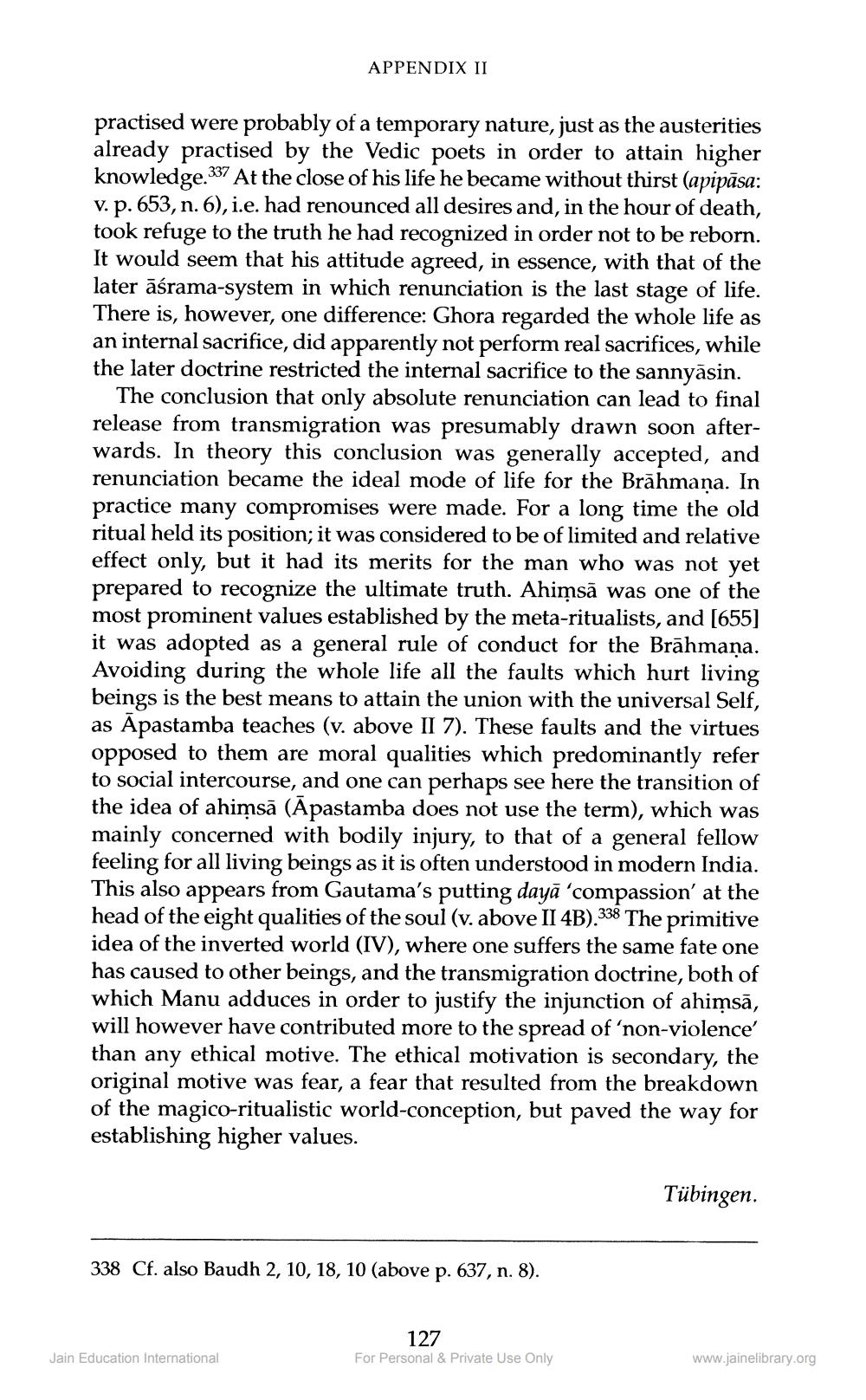________________
APPENDIX II
practised were probably of a temporary nature, just as the austerities already practised by the Vedic poets in order to attain higher knowledge.337 At the close of his life he became without thirst (apipāsa: v. p. 653, n. 6), i.e. had renounced all desires and, in the hour of death, took refuge to the truth he had recognized in order not to be reborn. It would seem that his attitude agreed, in essence, with that of the later āśrama-system in which renunciation is the last stage of life. There is, however, one difference: Ghora regarded the whole life as an internal sacrifice, did apparently not perform real sacrifices, while the later doctrine restricted the internal sacrifice to the sannyāsin.
The conclusion that only absolute renunciation can lead to final release from transmigration was presumably drawn soon afterwards. In theory this conclusion was generally accepted, and renunciation became the ideal mode of life for the Brāhmaṇa. In practice many compromises were made. For a long time the old ritual held its position; it was considered to be of limited and relative effect only, but it had its merits for the man who was not yet prepared to recognize the ultimate truth. Ahimsā was one of the most prominent values established by the meta-ritualists, and (655) it was adopted as a general rule of conduct for the Brāhmaṇa. Avoiding during the whole life all the faults which hurt living beings is the best means to attain the union with the universal Self, as Āpastamba teaches (v. above II 7). These faults and the virtues opposed to them are moral qualities which predominantly refer to social intercourse, and one can perhaps see here the transition of the idea of ahimsā (Āpastamba does not use the term), which was mainly concerned with bodily injury, to that of a general fellow feeling for all living beings as it is often understood in modern India. This also appears from Gautama's putting dayā 'compassion' at the head of the eight qualities of the soul (v. above II 4B).338 The primitive idea of the inverted world (IV), where one suffers the same fate one has caused to other beings, and the transmigration doctrine, both of which Manu adduces in order to justify the injunction of ahimsā, will however have contributed more to the spread of 'non-violence' than any ethical motive. The ethical motivation is secondary, the original motive was fear, a fear that resulted from the breakdown of the magico-ritualistic world-conception, but paved the way for establishing higher values.
Tübingen.
338 Cf. also Baudh 2, 10, 18, 10 (above p. 637, n. 8).
127
Jain Education International
For Personal & Private Use Only
www.jainelibrary.org




